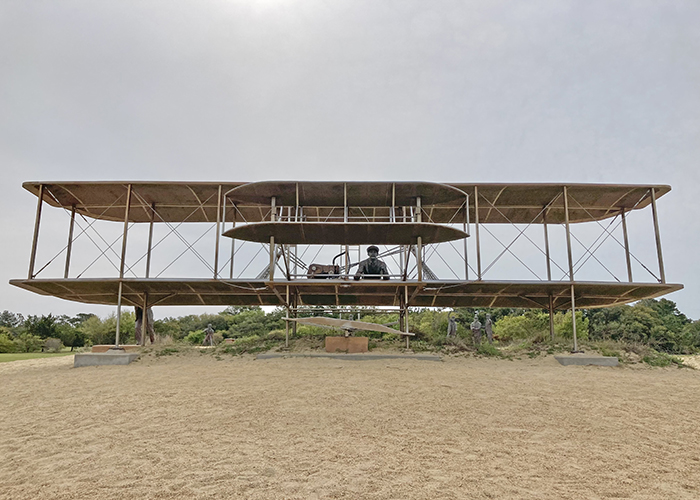 Previous Day |
Plymouth, NC → Kill Devil Hills, NC → Orange, VA 572.0 mi (920.5 km) |
 Next Day |
Let’s fly, everyone!
I was up and at ’em at what would have been the crack of dawn, but there’s a storm a-comin’! Rather than race westward to see as much as possible before the rain, I was backtracking all the way to Kill Devil Hills, where yesterday I’d been mere minutes too late to see Wright Brothers National Memorial. No matter! Mo’ miles or no miles, I was back at the gate the second this significant site opened for the day!
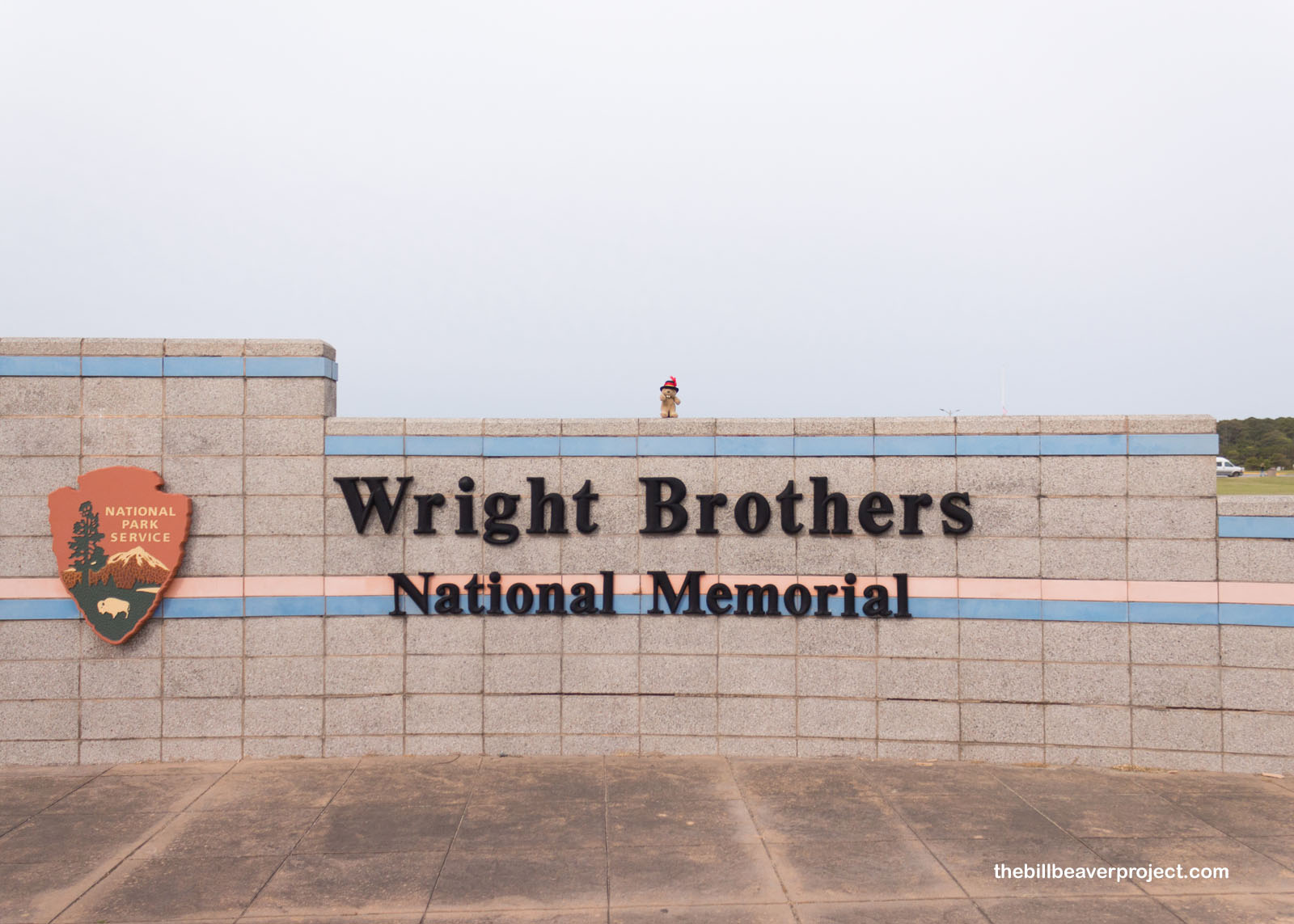 |
See, it was here, at this very sandy, wind-swept, and mosquito-infested spot, that Wilbur and Orville Wright spent three years (1900 to 1903) testing their gliders! Originally, they were building on the work of famed glider pilot, Otto Lilienthal, but they ultimately abandoned it to create something original! Recreations of their hangers and a boulder over their original launching point commemorate the more than one thousand test flights they launched here!
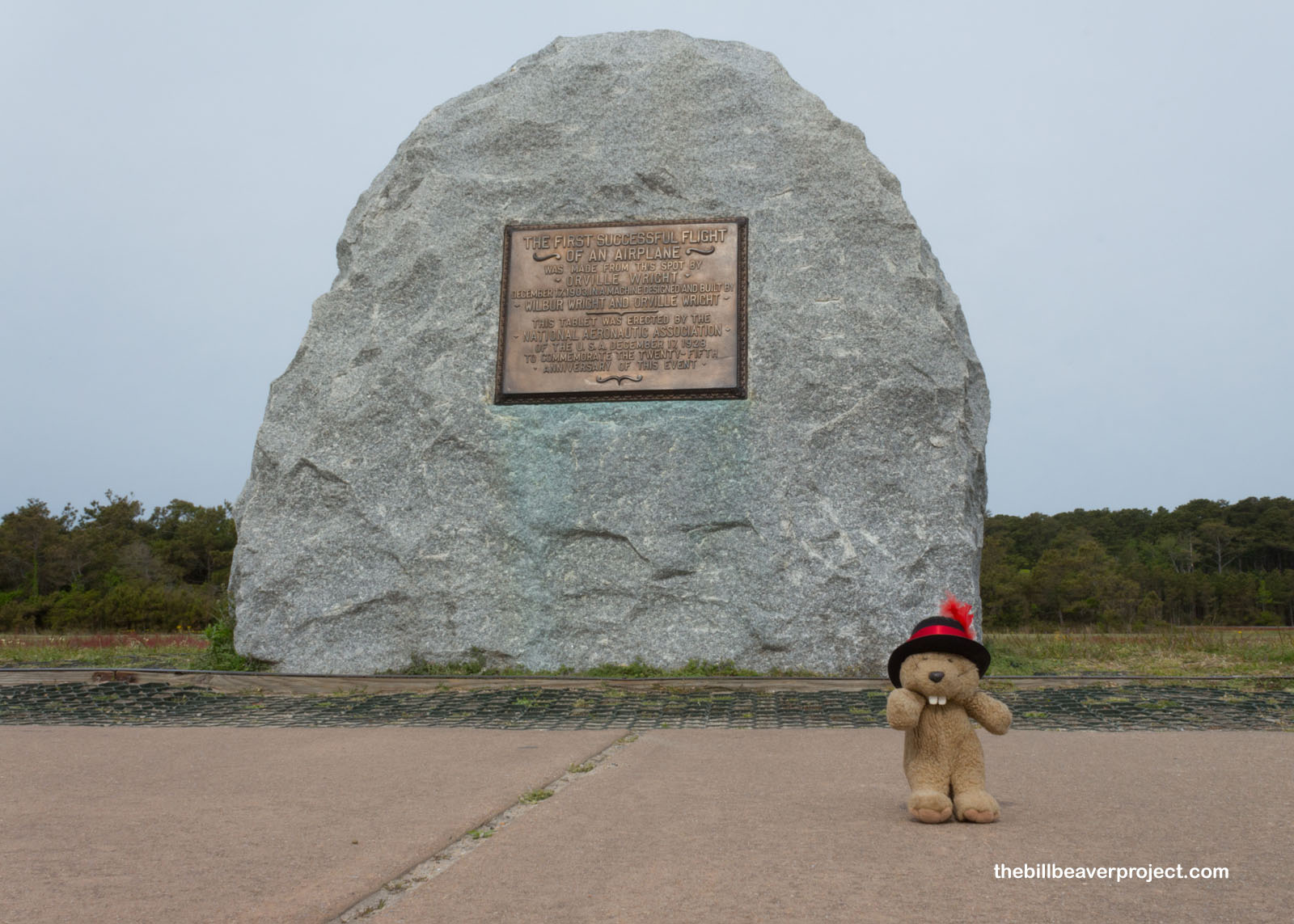 |
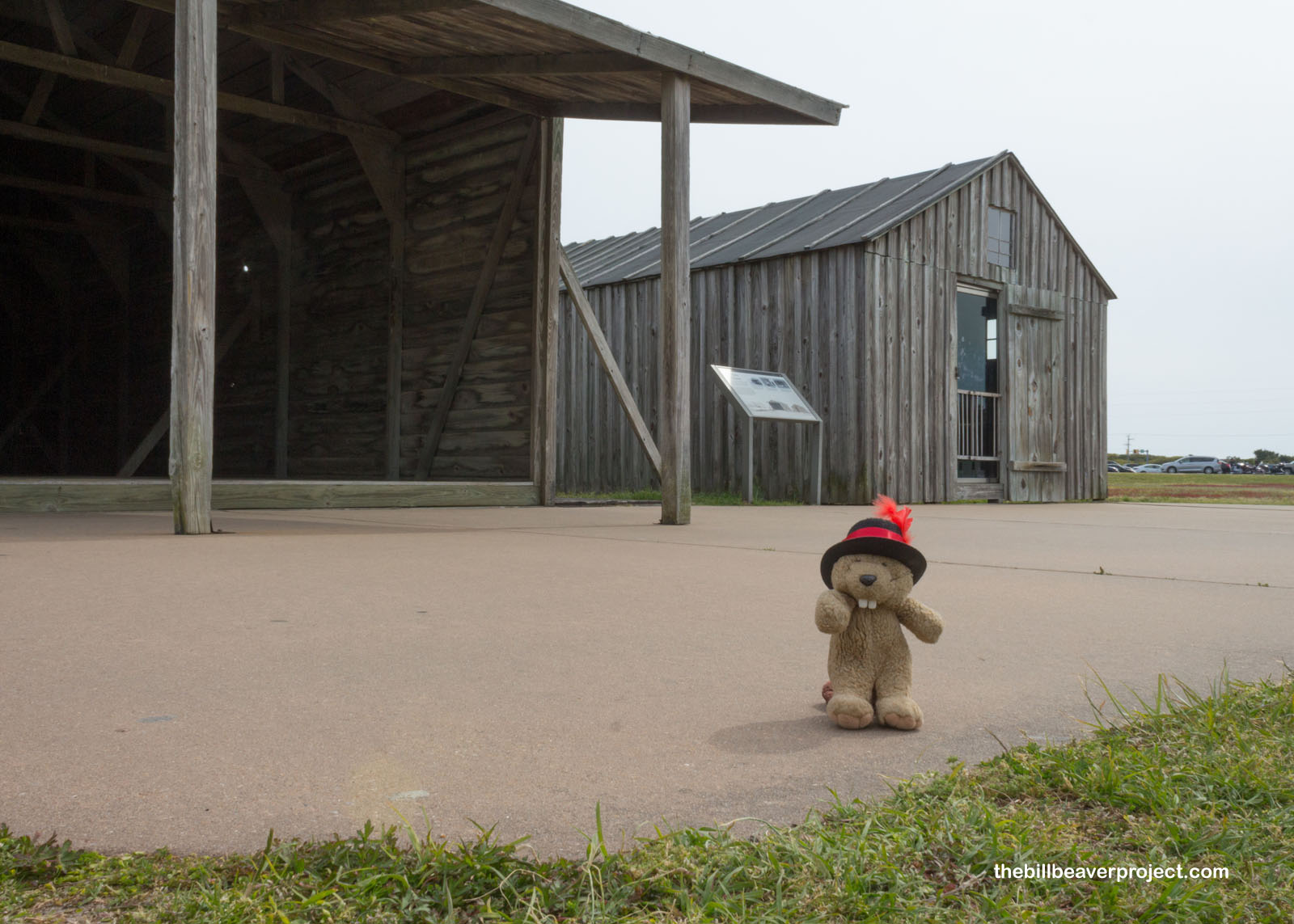 |
Observing birds, the two brothers made some important innovations: longer wings, warped for stability, vertical tails for steering, and their own unique, 12-horsepower, gas-powered engine to power their unique propellers! After testing their new design in a wind tunnel they’d created, the brothers flipped a coin, putting Wilbur first to test the new glider, but he crashed it right away! Three days later, on December 17, 1903, Orville took the controls for a 120-foot flight. They traded off for a 175-foot flight, a 200-foot flight, then a nearly minute-long flight spanning 852 feet! A gust of wind caused that glider to crash, but the Wrights had enough data to take back to Dayton, where they planned out their next move!
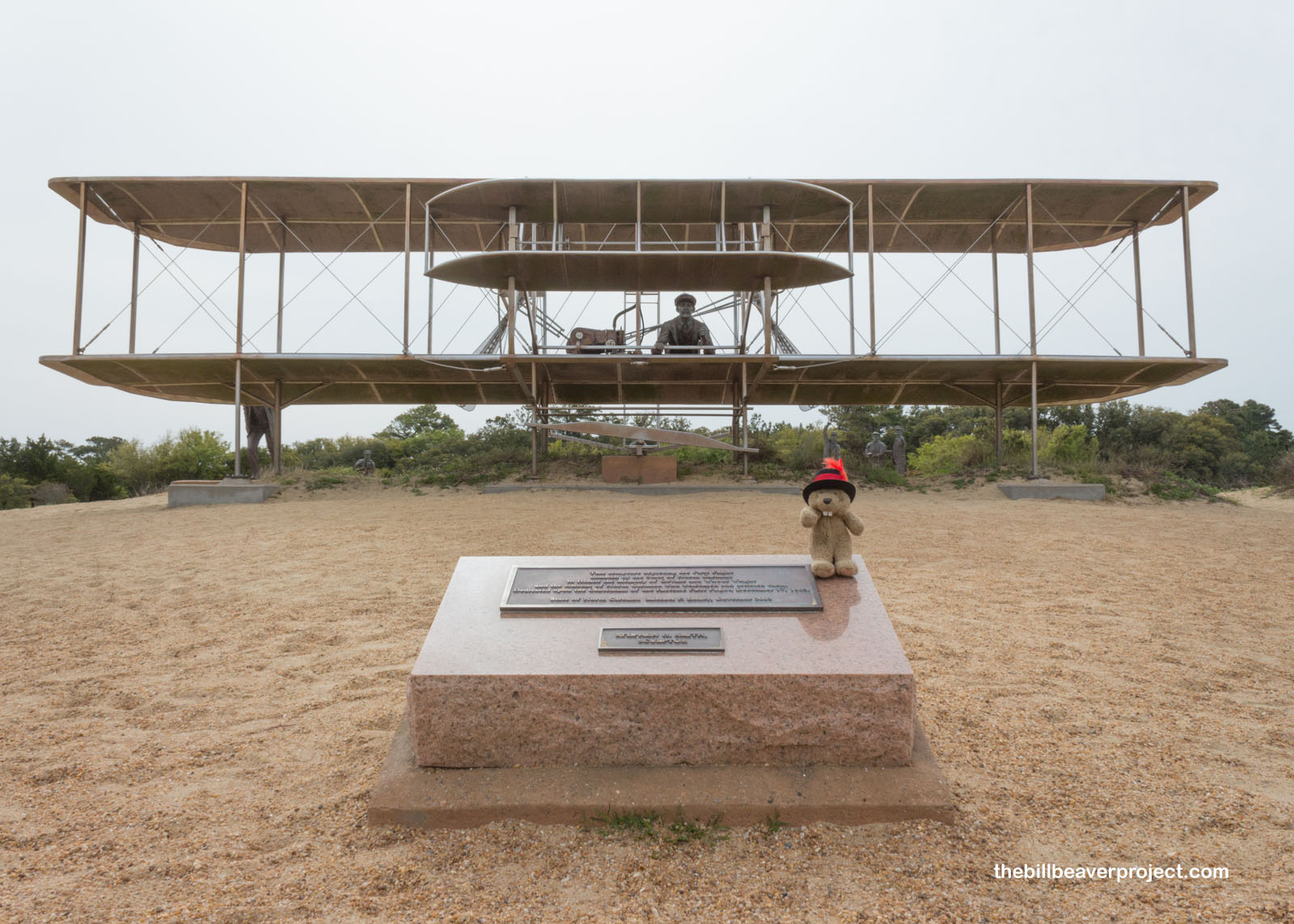 |
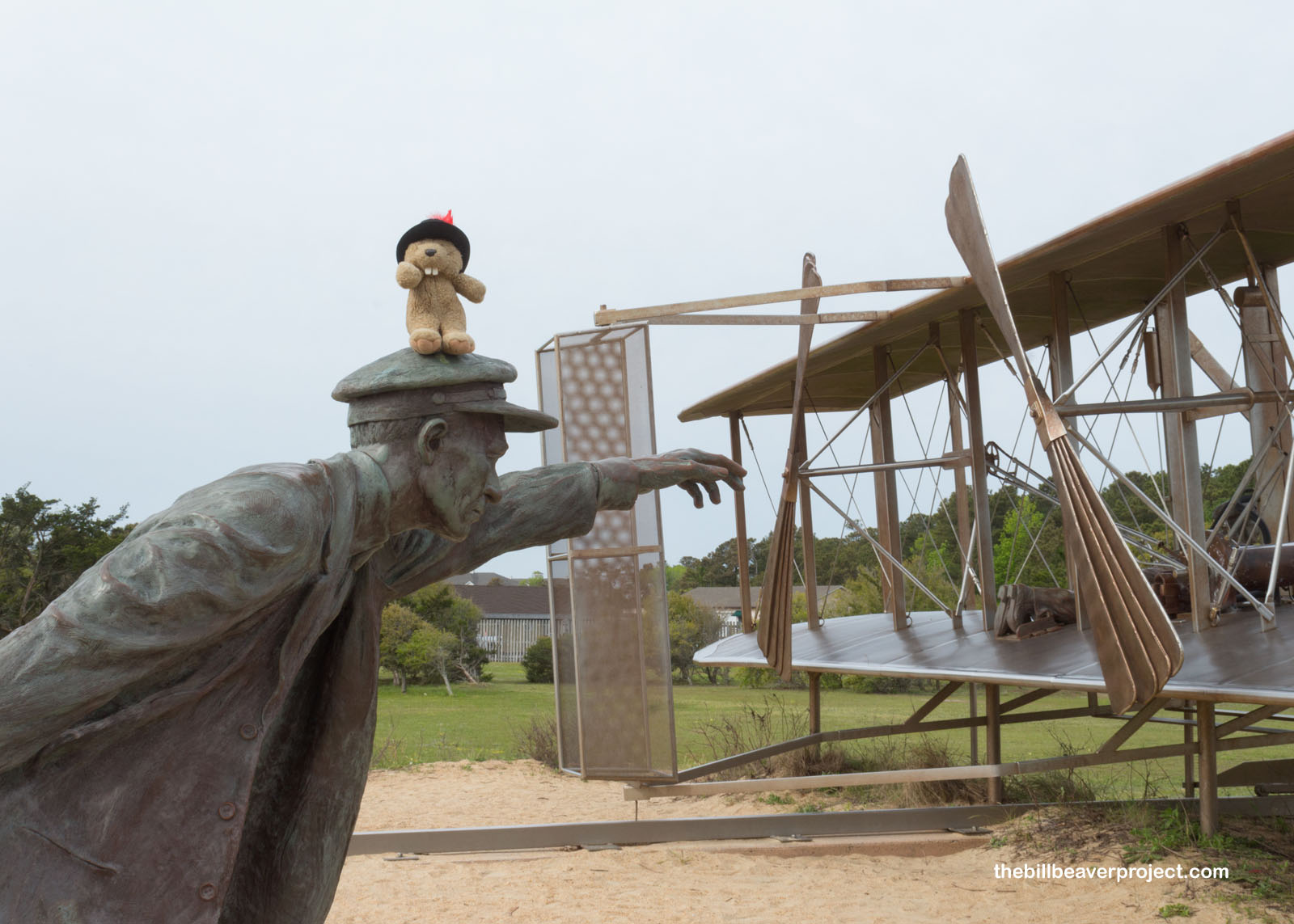 |
Dayton’s a long way from the Outer Banks of North Carolina for sure, but they’d come all the way here for the solitude, the strong winds, the high dunes, and, mindful of Otto Lilienthal’s tragic crash, the soft landings. This huge dune was called Kill Devil Hill, either from merchants selling rum “strong enough to kill the devil,” or from a misunderstanding of “Killdeer Hills!” It might not look too much like the sandy dune from the Wright brothers’ day, but that’s because in 1929, workers covered the 90-foot dune in grass to stabilize the sand so they could build a memorial in honor of the Wright Brothers’ historic accomplishment!
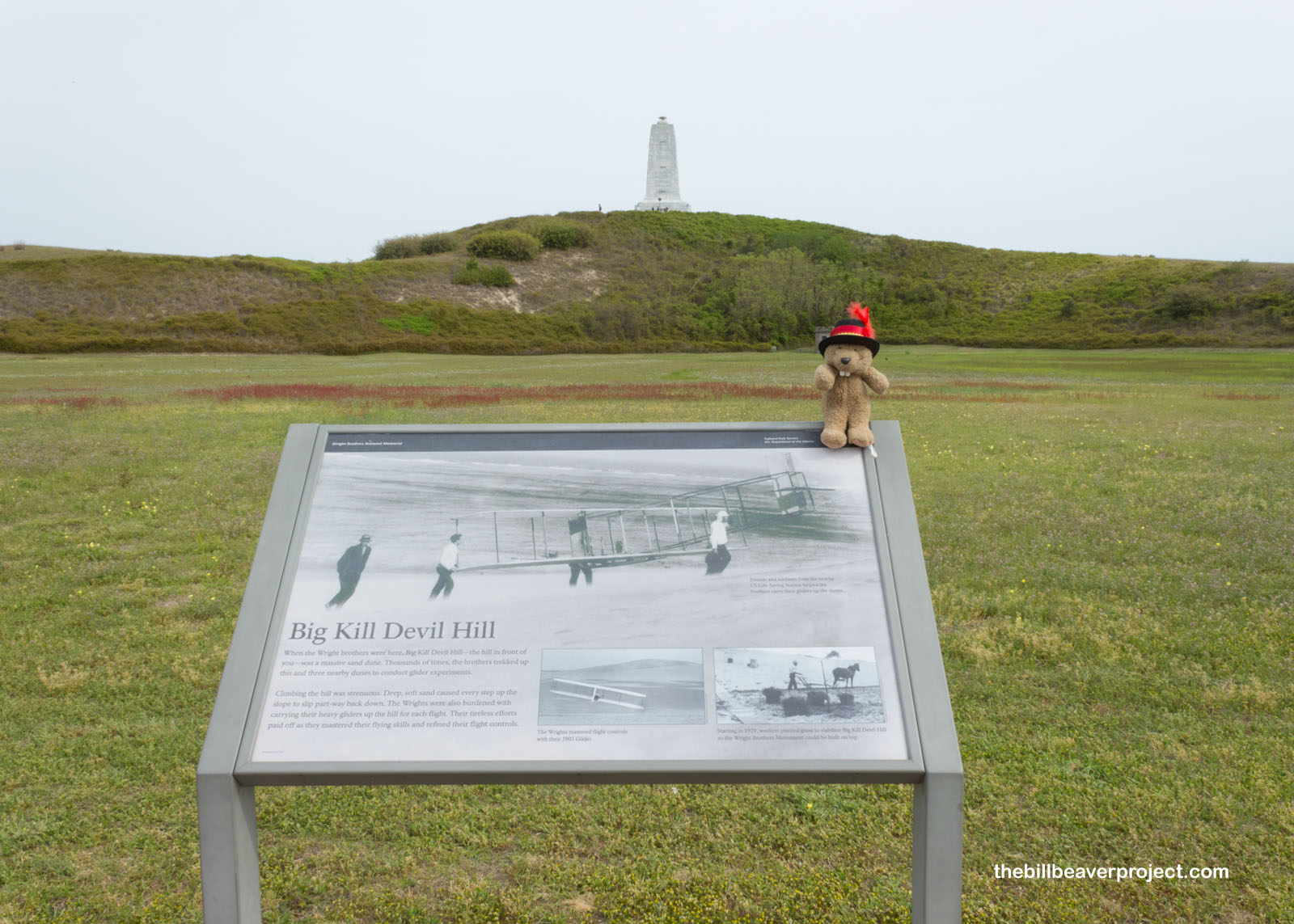 |
Today, that monument towers 60 feet over Kill Devil Hill! It was designed by Alfred Easton Poor and Robert Perry Rodgers with Art Deco features and a lit beacon on top, like a lighthouse! Before the National Park Service’s Mission 66 overhauled visitor centers nationwide in the ’50s, this monument was the main visitor contact station for the park, and folks could ascend to the top to peer out at the grounds where humans first took flight!
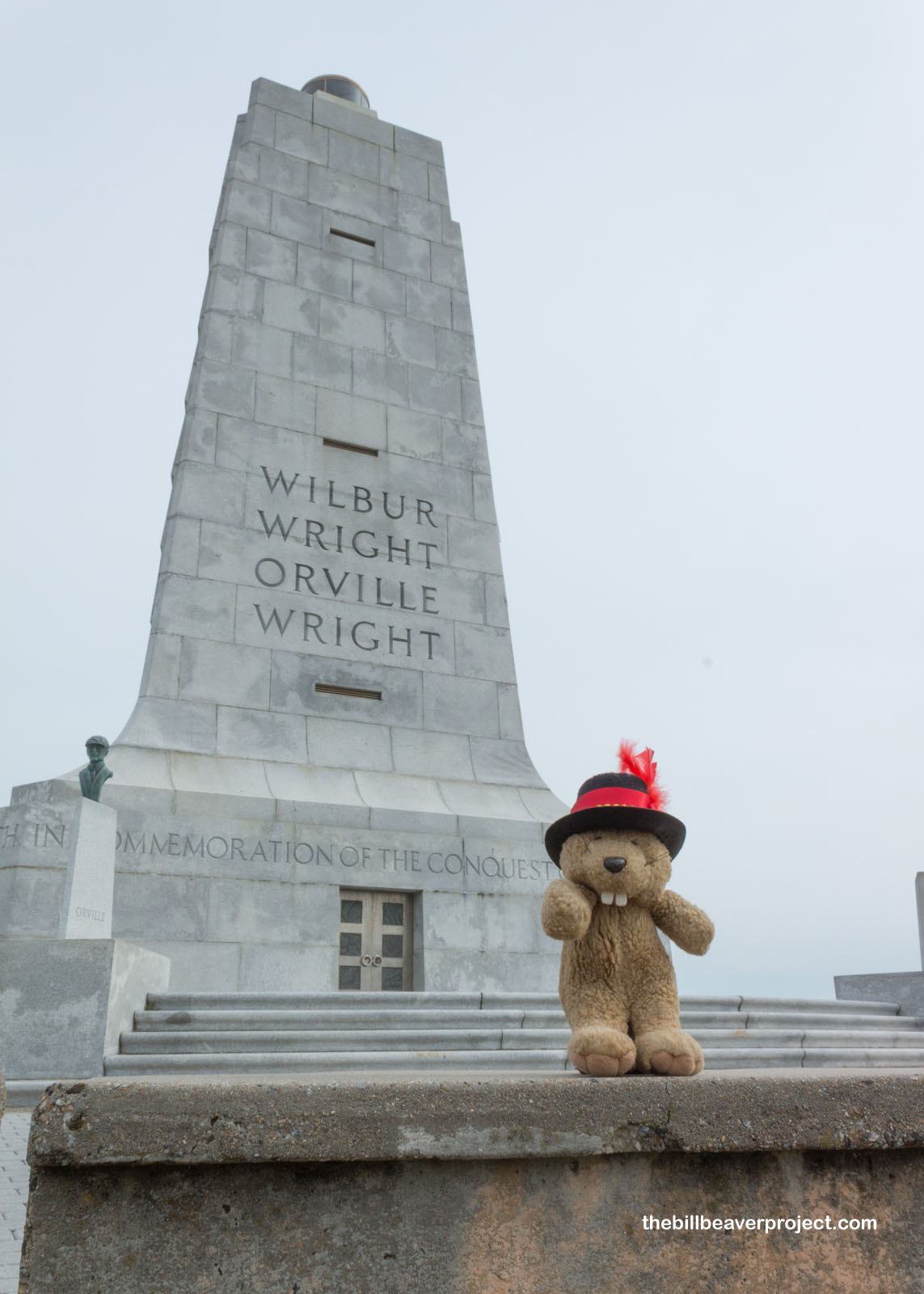 |
And then, conscious of the weather as the Wright Brothers had to be, I resumed my journey west. I’d had to rewrite my plans quite a bit today, but that was just fine. I wanted to see a little bit of the city named for the patron of the Lost Colony: Raleigh! Though the rain had started up halfway to North Carolina’s capital, I was as undaunted as the Raleigh Trolleys, mobile bars powered by pedaling patrons! I had to see the state capitol building, designed in Greek Revival style by David Paton to resemble the Parthenon! It was, as you might expect, built by enslaved folks, and completed in 1840 at a cost of three times the state’s total annual income!
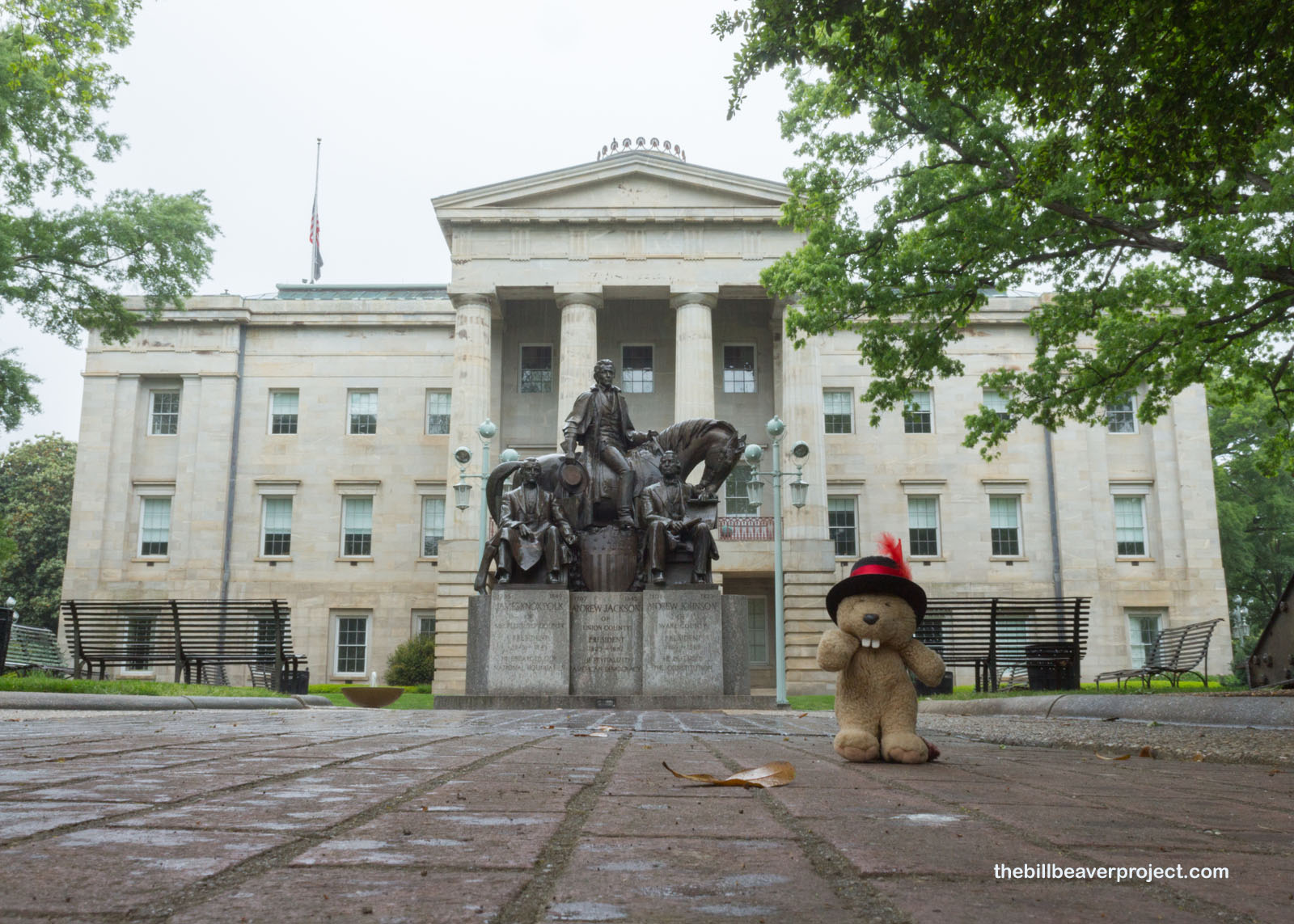 |
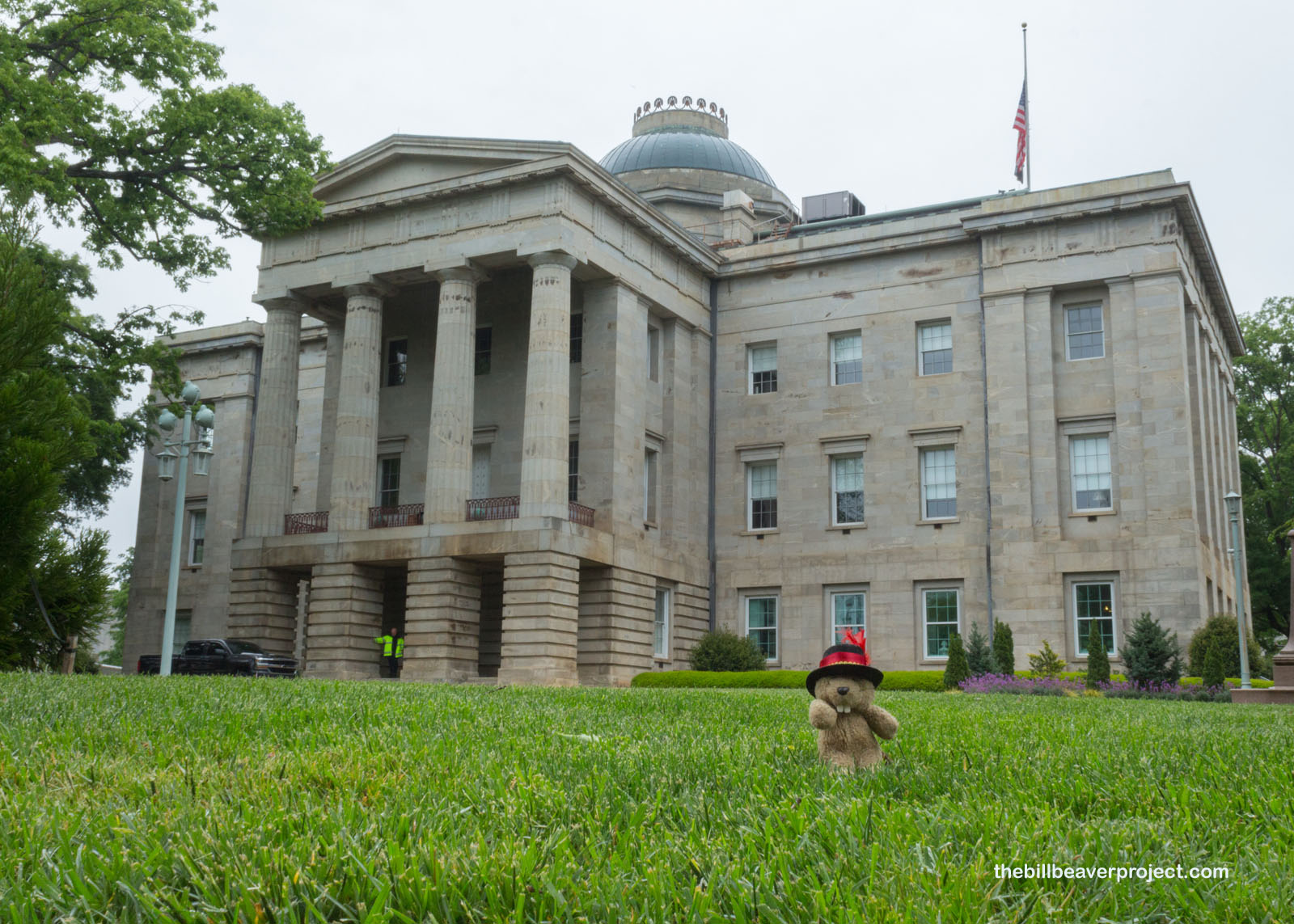 |
As I wandered Raleigh, there was much more to North Carolina Black culture than enslaving folks! Why, the Leonard Medical School at historically Black Shaw University, was the first four-year medical school of any kind in the United States! It was named for one of its philanthropists, Judson Wade Leonard, but was eventually outcompeted by other philanthropists, who put more funds into Meharry Medical College in Nashville and Howard Medical College in Washington, D.C.
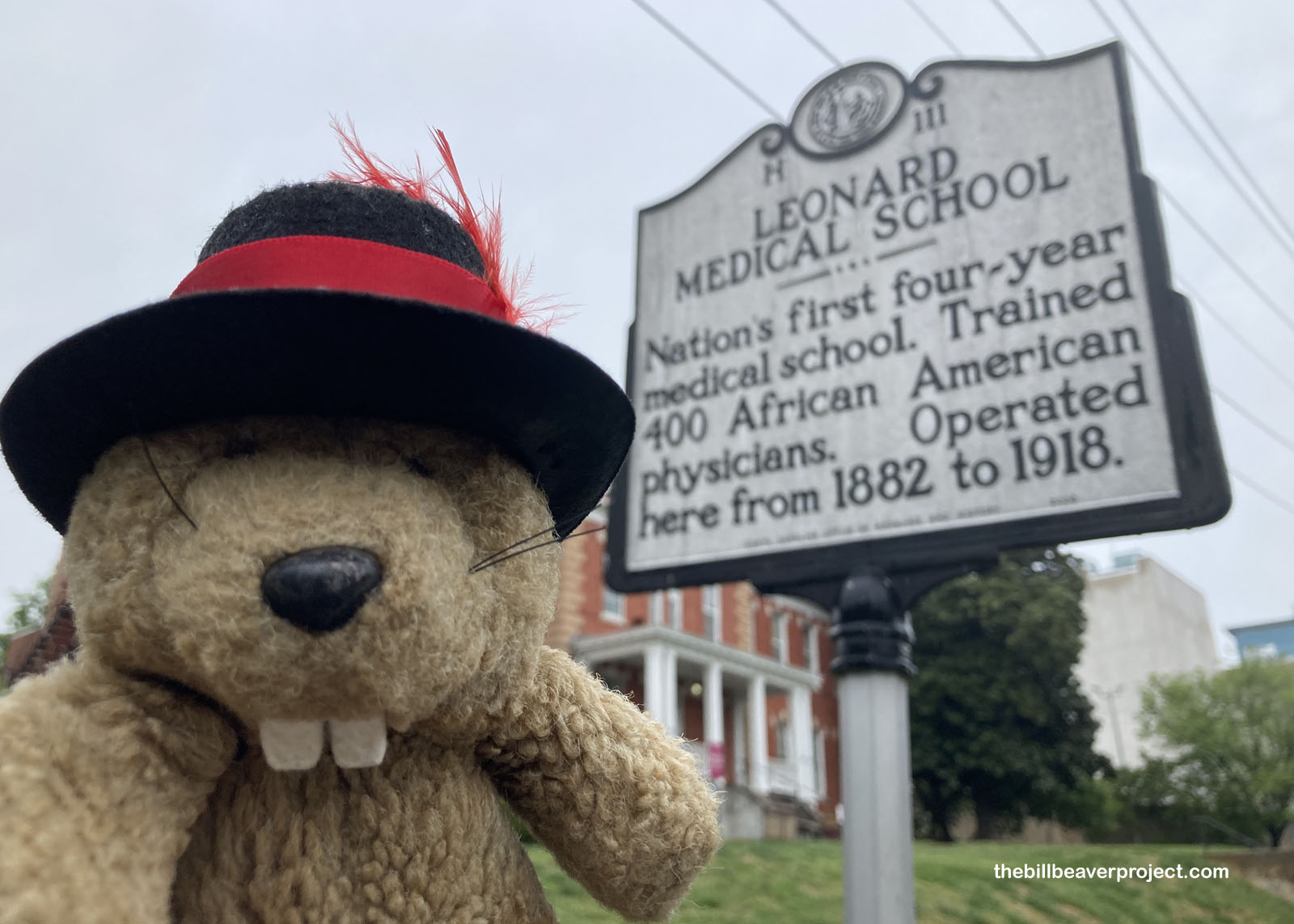 |
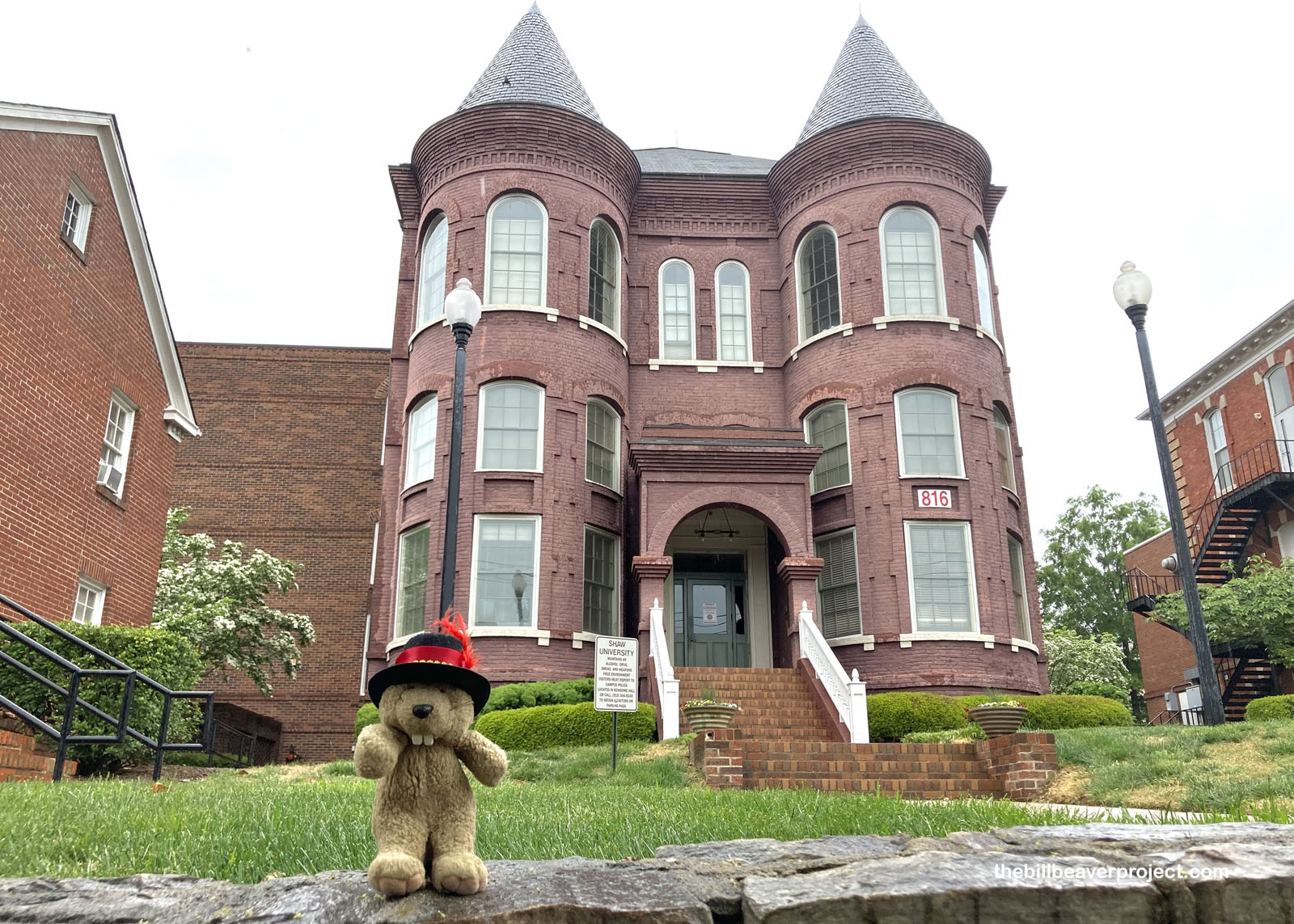 |
Not far away was Estey Hall, also on the National Register as a historic first. The oldest building on campus, it was the first in the US built specifically to give Black women a higher education! Many years afterward, it was where Ella Baker founded the Student Nonviolent Coordinating Committee (SNCC) in 1960! They’d go on to lead sit-ins and even the famous Freedom Rides that would lead to desegregation of public spaces across the South!
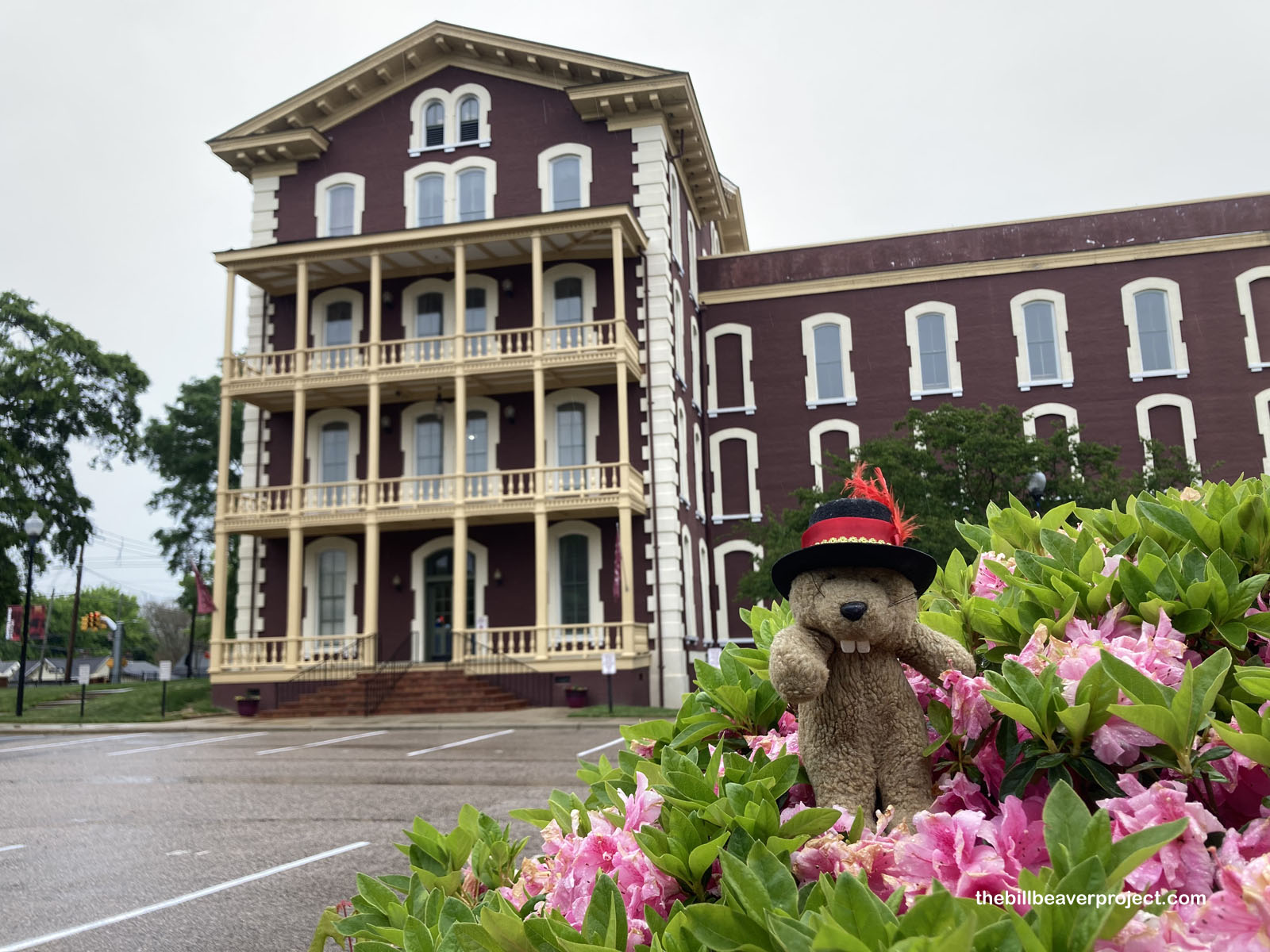 |
The SNCC was inspired by the actions of four brave freshmen from North Carolina A&T State University on February 1, 1960! David Richmond, Franklin McCain, Ezell Blair, Jr., and Joseph McNeil (the Greensboro Four), organized the nation’s first sit-in, an act of pure defiance in the face of unjust, discriminatory laws that persisted in the South long after the 1954 Brown v. Board ruling! To the northwest of Raleigh, in Greensboro, I found a statue set up in their honor!
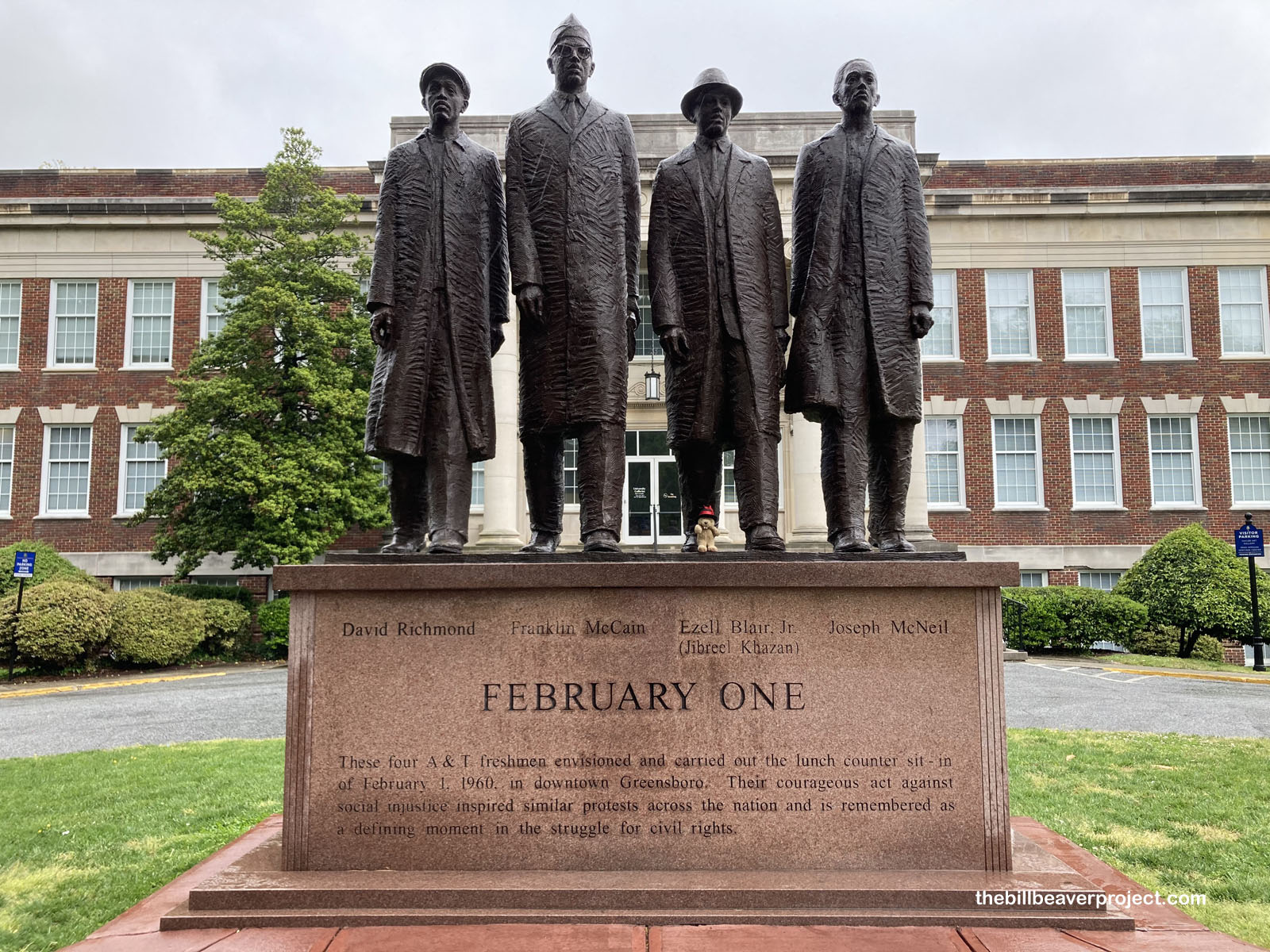 |
The venue for their historic sit-in was F.W. Woolworth Co., a department store and restaurant. They went in to buy school supplies, then sat down at the whites-only section of the restaurant to read philosophy books! After all, if the store accepted their money for school supplies, it could accept their money for food! They stayed until the store closed for the day, despite the police being called, and then more protestors came the next day. By February 7th, the whole city was awash in protests, which led to the desegregation of Greensboro’s public spaces by June and inspired desegregation of the whole state of North Carolina!
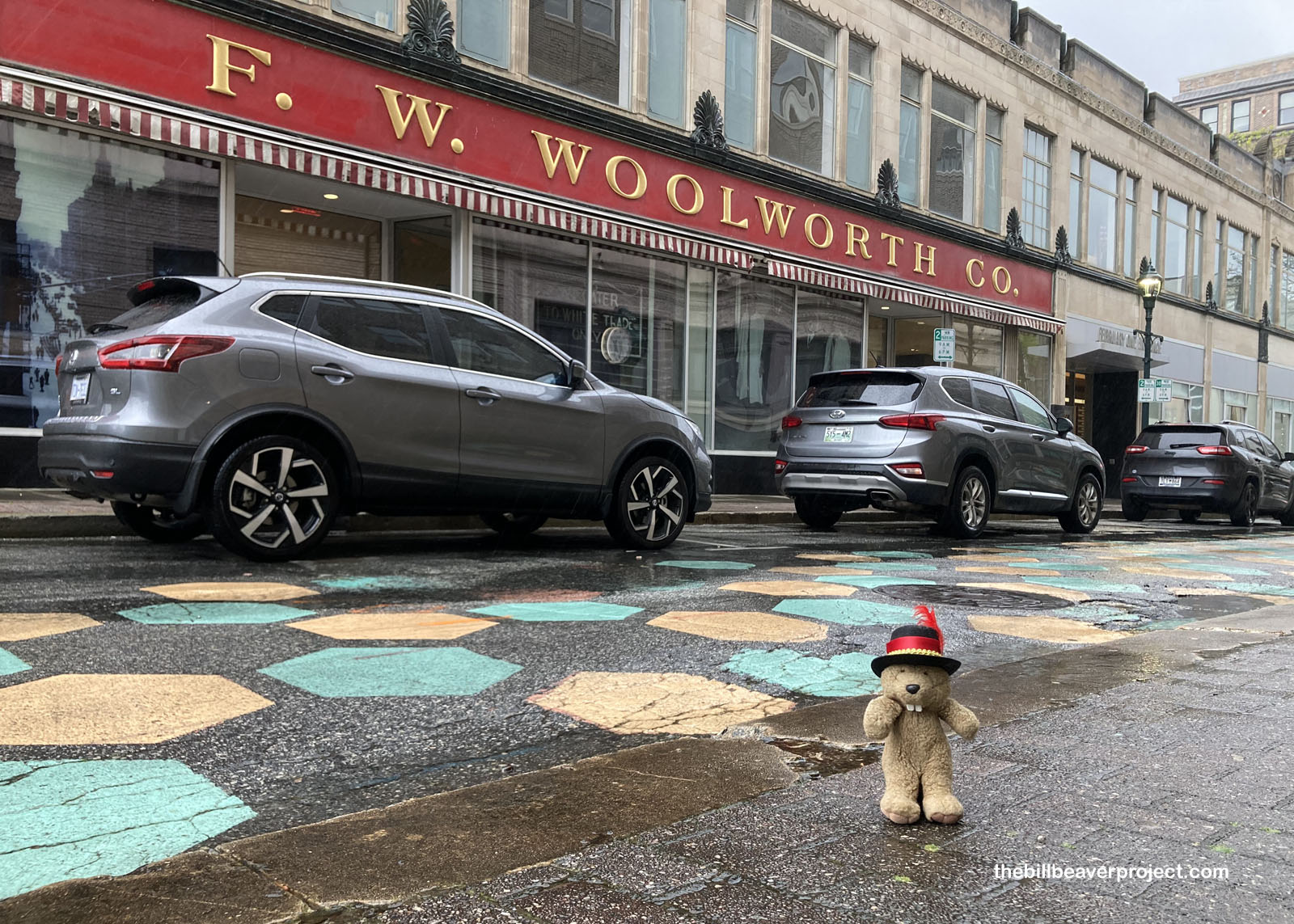 |
But I was to wrap up my day at a very different kind of historic place. It was drizzling pretty hard by the time I reached Greensboro’s national park site, Guilford Courthouse National Military Park! While yesterday I’d learned about the defeat of Lord Cornwallis at Yorktown, this was the scene of one of Britain’s final victories. It was where their campaign to hold the South really won the battle but lost the war!
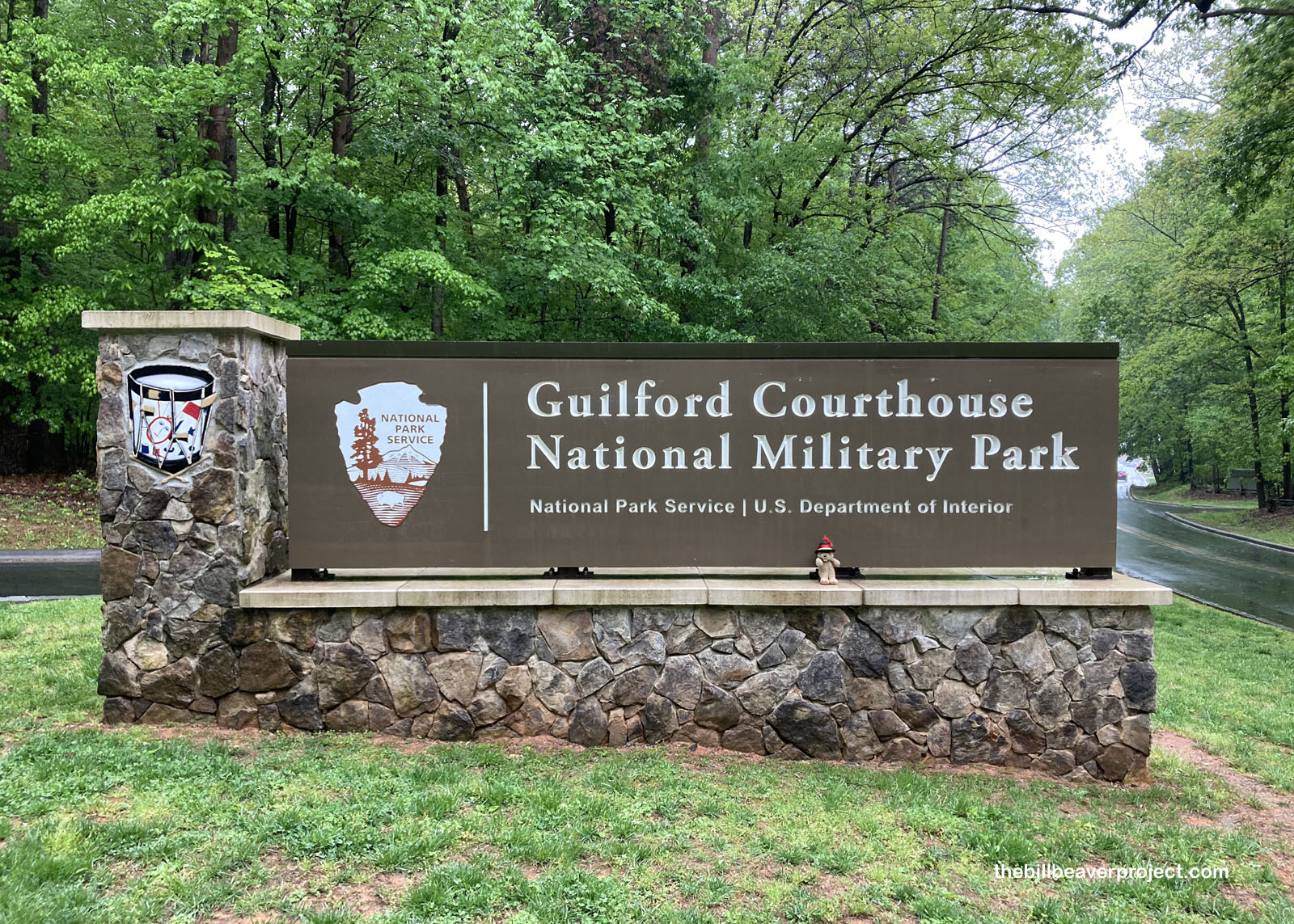 |
There was a one-way loop through the battlefield, but first I took a moment to learn about an early stage of this park. In 1887, the Guilford Battle Ground Company set up a cluster of monuments here, not so much about preserving the original battlefield as it was about making a glorious site to honor North Carolina’s role in the Revolution! Twenty years later, it became the first Revolutionary War battlefield preserved by Congress, settling into national park status in 1933! With that change, the focus became interpreting the original battlefield, so most of the monuments got clustered here, while the arched entrances were taken out because they were too narrow to let cars through!
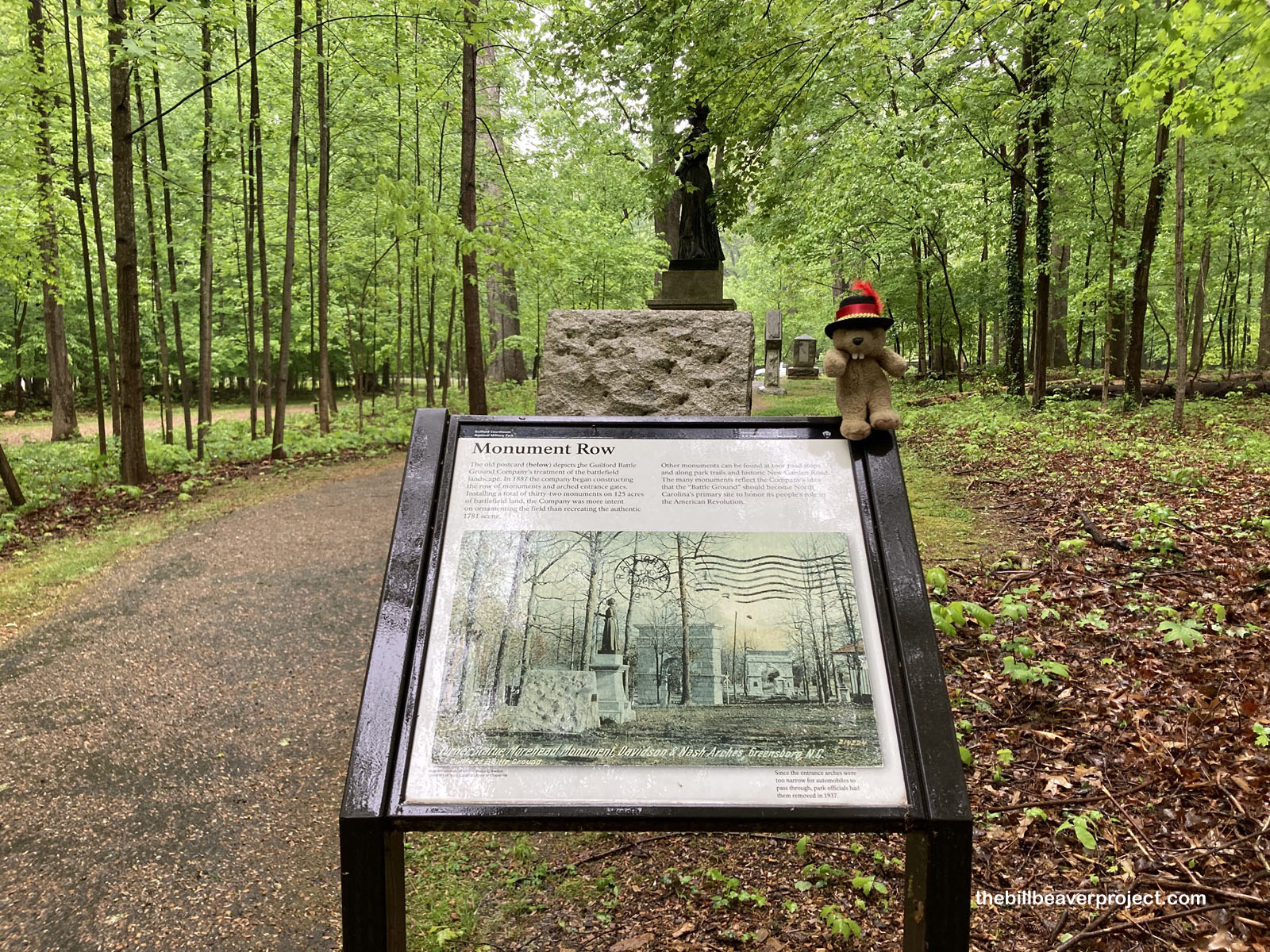 |
Today, the tour route circles the battlefield, where British Troops had been confident in their ability to hold the South, so confident, in fact, that they’d burned up a bunch of supplies chasing the American troops here! One of those American troops was Joseph Winston, who fought here and would later become a state senator! His statue is one of the monuments left on the battleground!
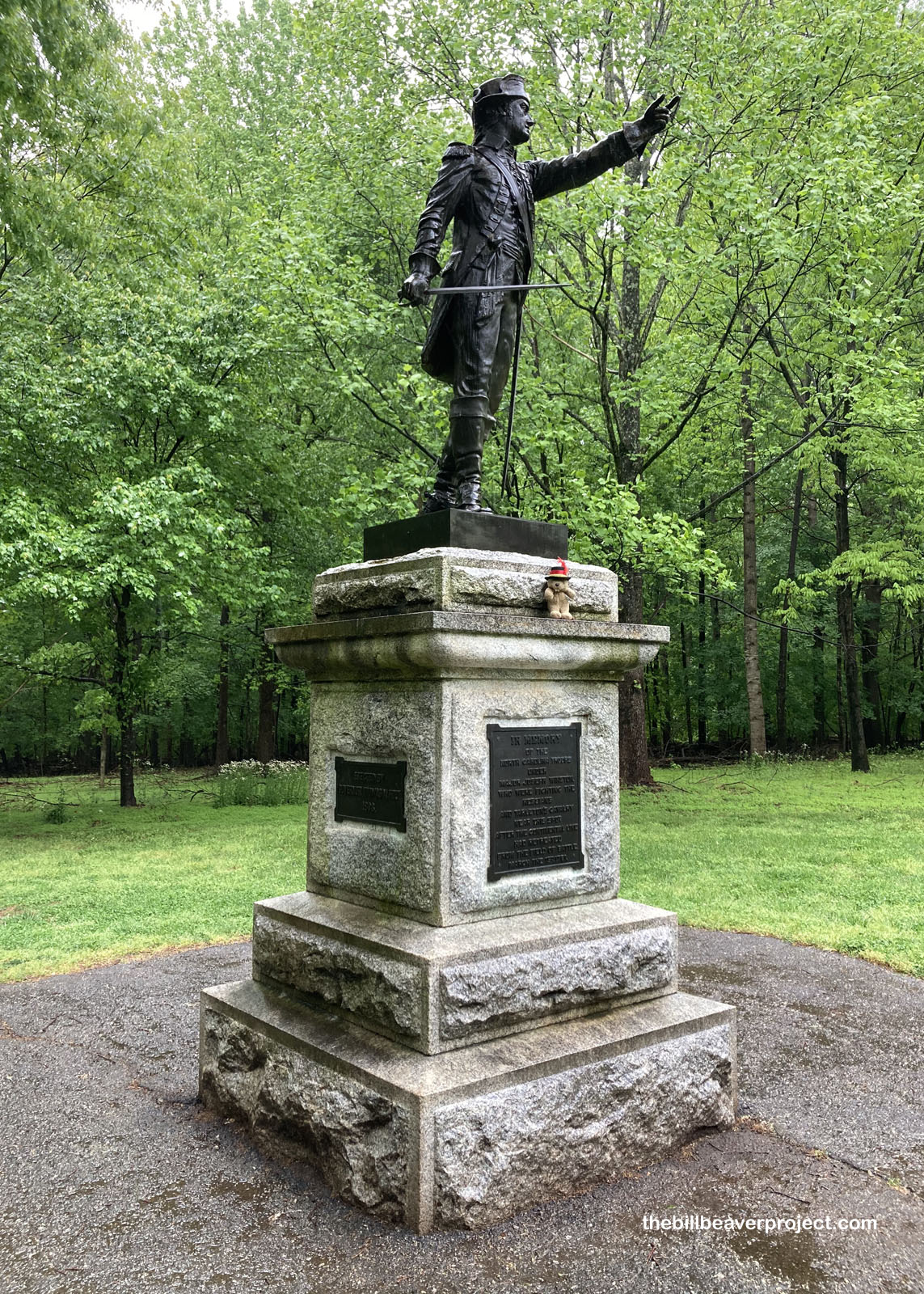 |
Further down, at Stop 5, I encountered the Cavalry Monument, honoring William Washington, Peter Francisco, and Marquis Bretigny, who attacked at the third line. This was no easy battle for either side! Both sides were very far from reinforcements, so these fights were exhausting. The British plucked a victory out of the Battle of Guilford Courthouse, but they limped back to Virginia, depleted, toward final defeat at Yorktown!
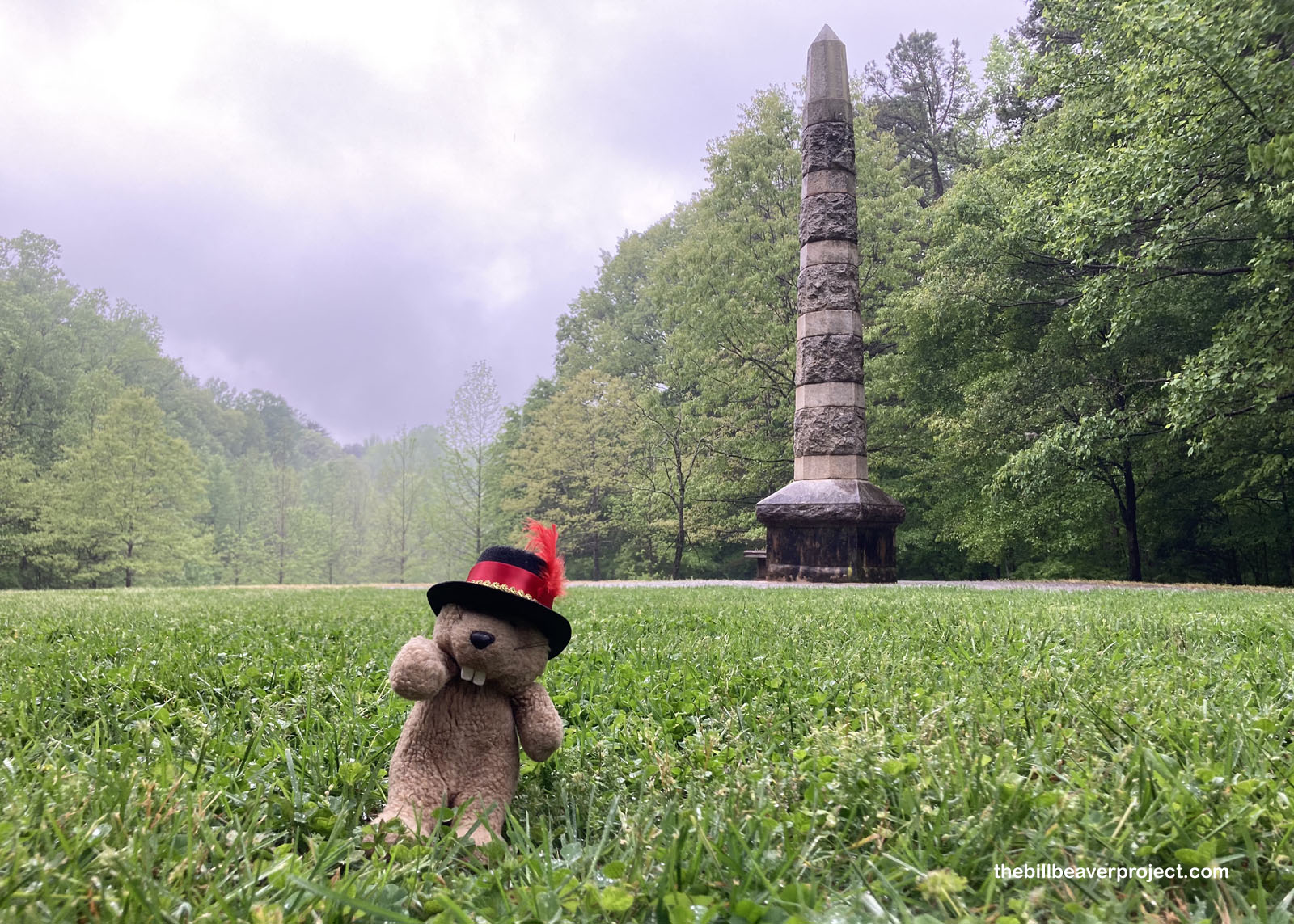 |
Sadly, the courthouse that gave this battlefield its name no longer exists! It was part of the Guilford County seat along with a jail and a tavern, which were all moved six miles south to Greensboro in 1809. It wasn’t a big target; it just so happened to be where the American army was camped, and the British wanted to destroy them!
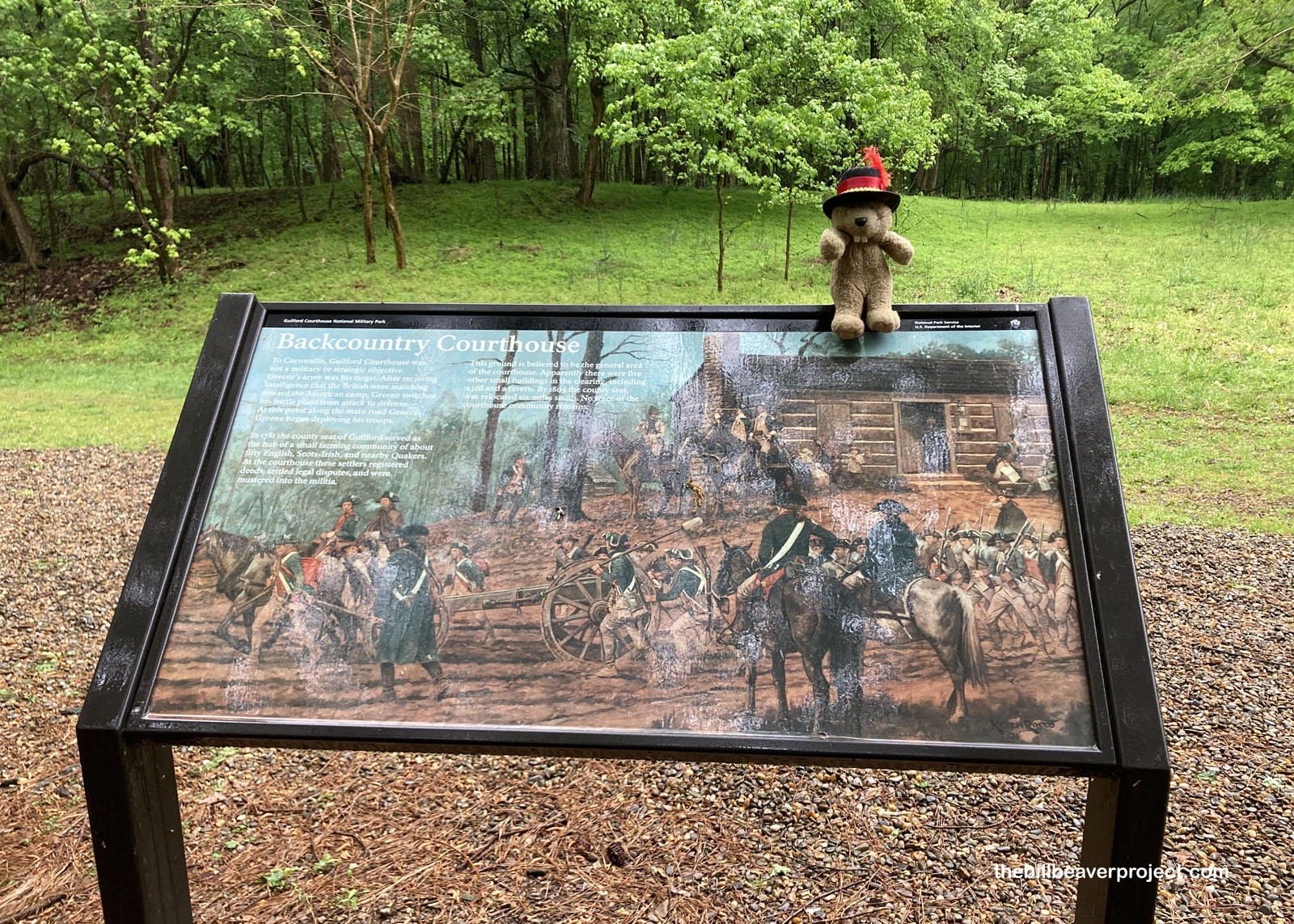 |
In particular, they’d been camped around a white oak tree the morning of the battle, probably little more than a sapling at the time but over 78 feet high when it toppled in 1986! A descendent of this Liberty Oak now stands in its place!
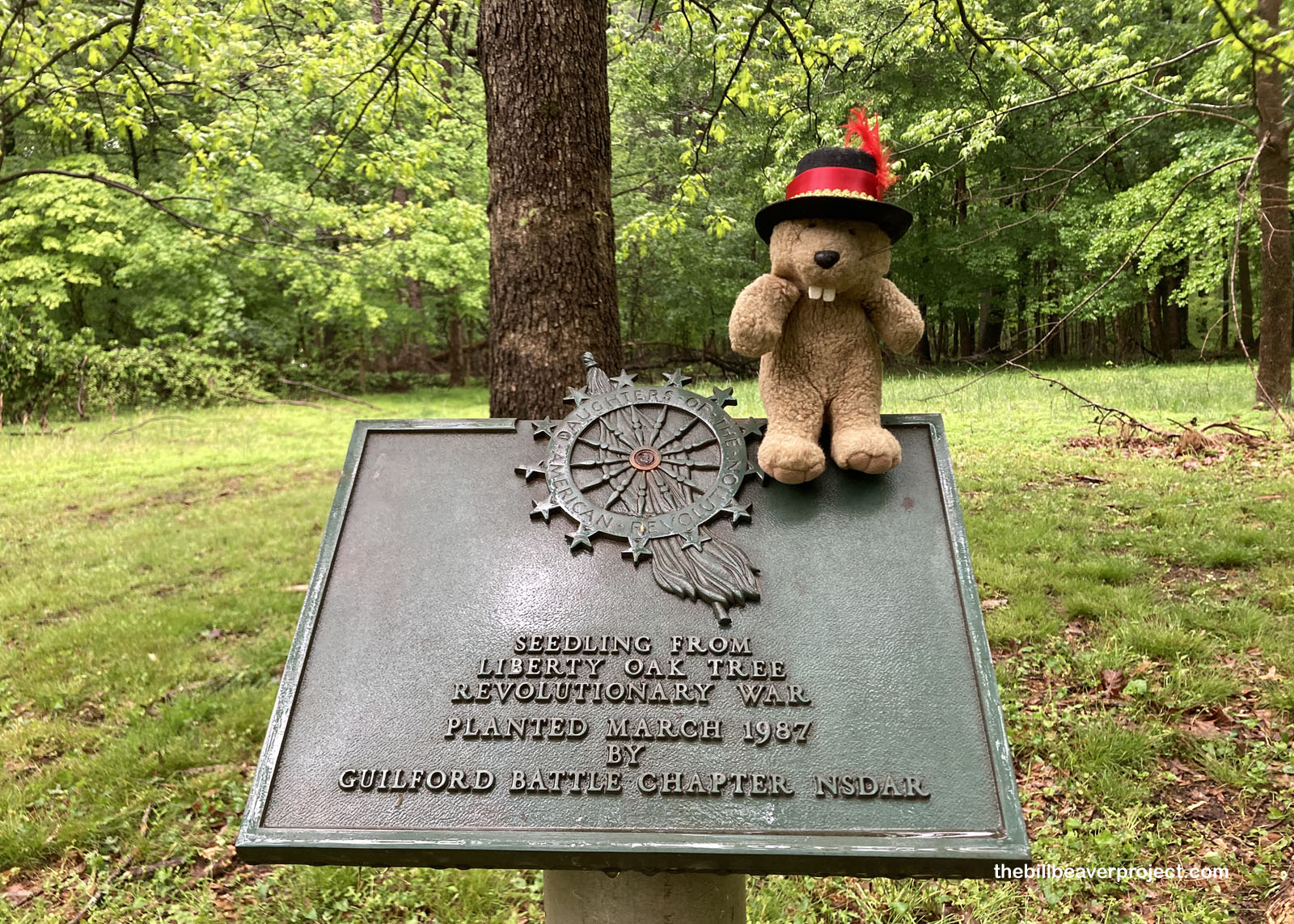 |
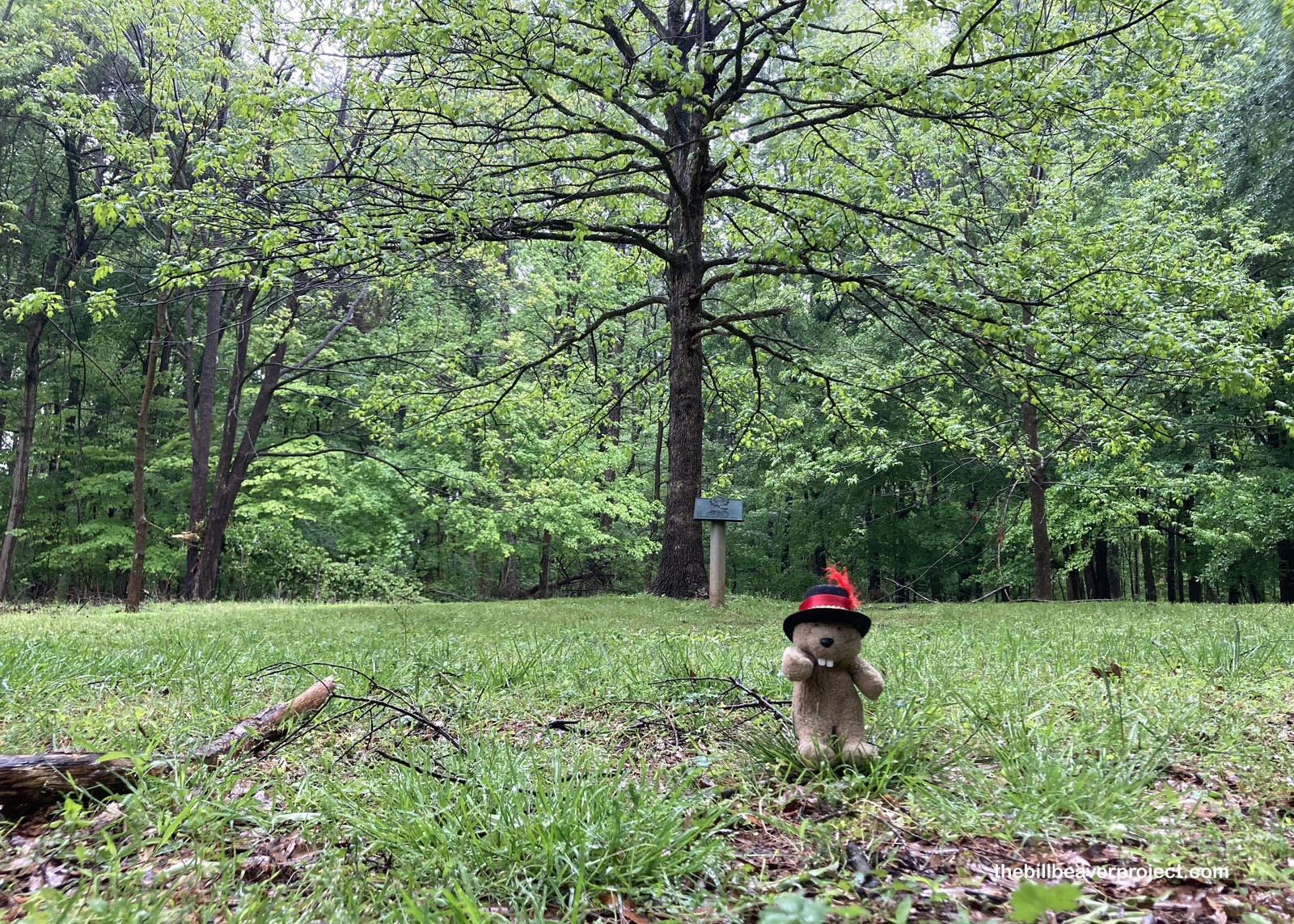 |
I concluded my circuit just in time to avoid getting locked in the park, and at the end was the park’s most famous statue: Nathanael Greene, the major general who ordered an attack on the British on March 14, 1781! Not to be discouraged after the failed battle, General Greene would go on to recapture the South while the main British forces went back to Virginia, effectively undoing the Empire’s last strategic campaign of the war!
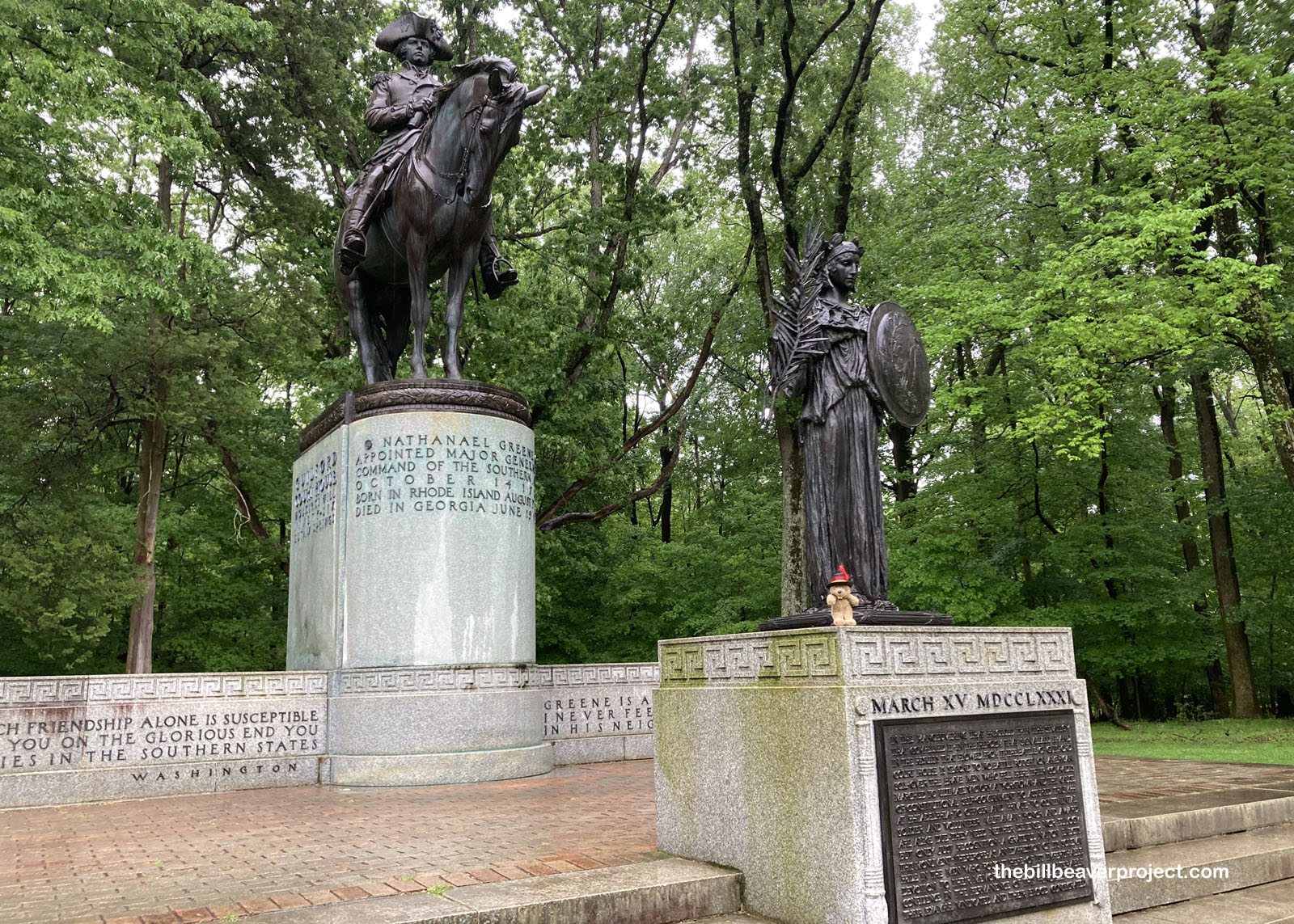 |
After circling Guilford Courthouse National Military Park, I was super soaked and ready to dry off. It had been a long day on a rainy road, and, like the British, I was tired and ready to head back into Virginia! I’ll need to get some rest, because tomorrow, I have a full day of hiking in Shenandoah National Park! Until then…
Every little thing’s gonna be all Wright!

 Previous Day |
Total Ground Covered: 798.1 mi (1,284.4 km) |
 Next Day |
